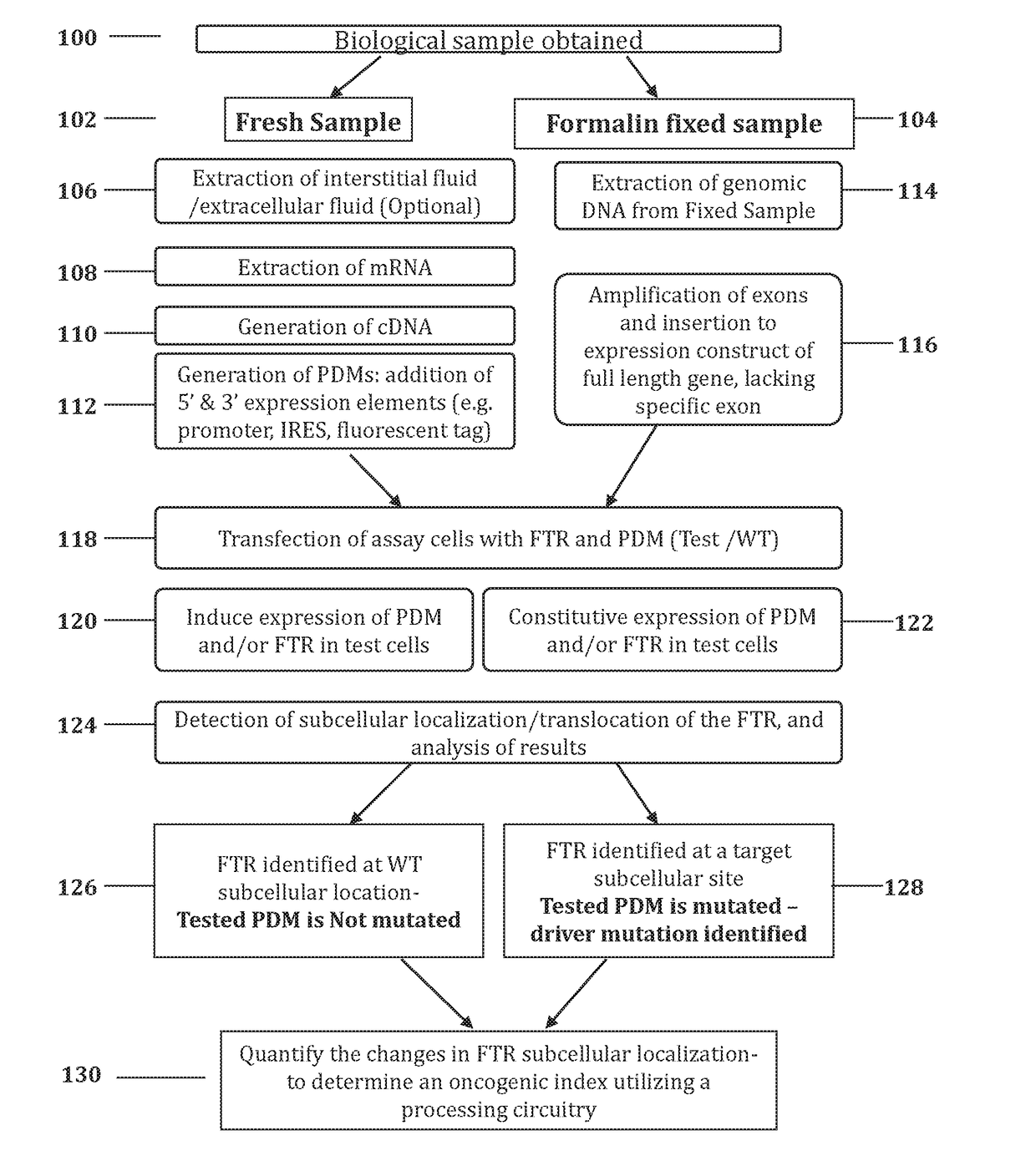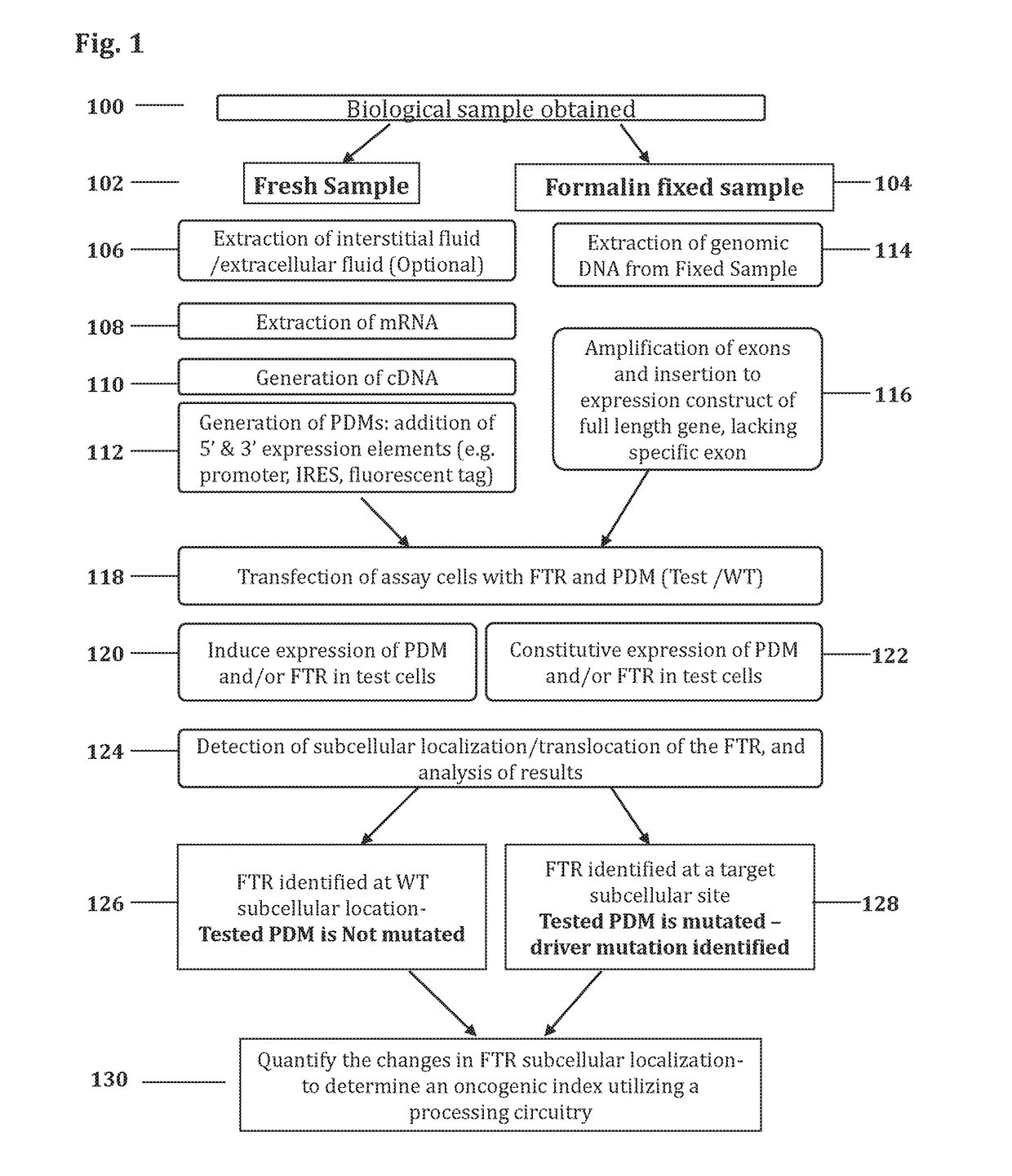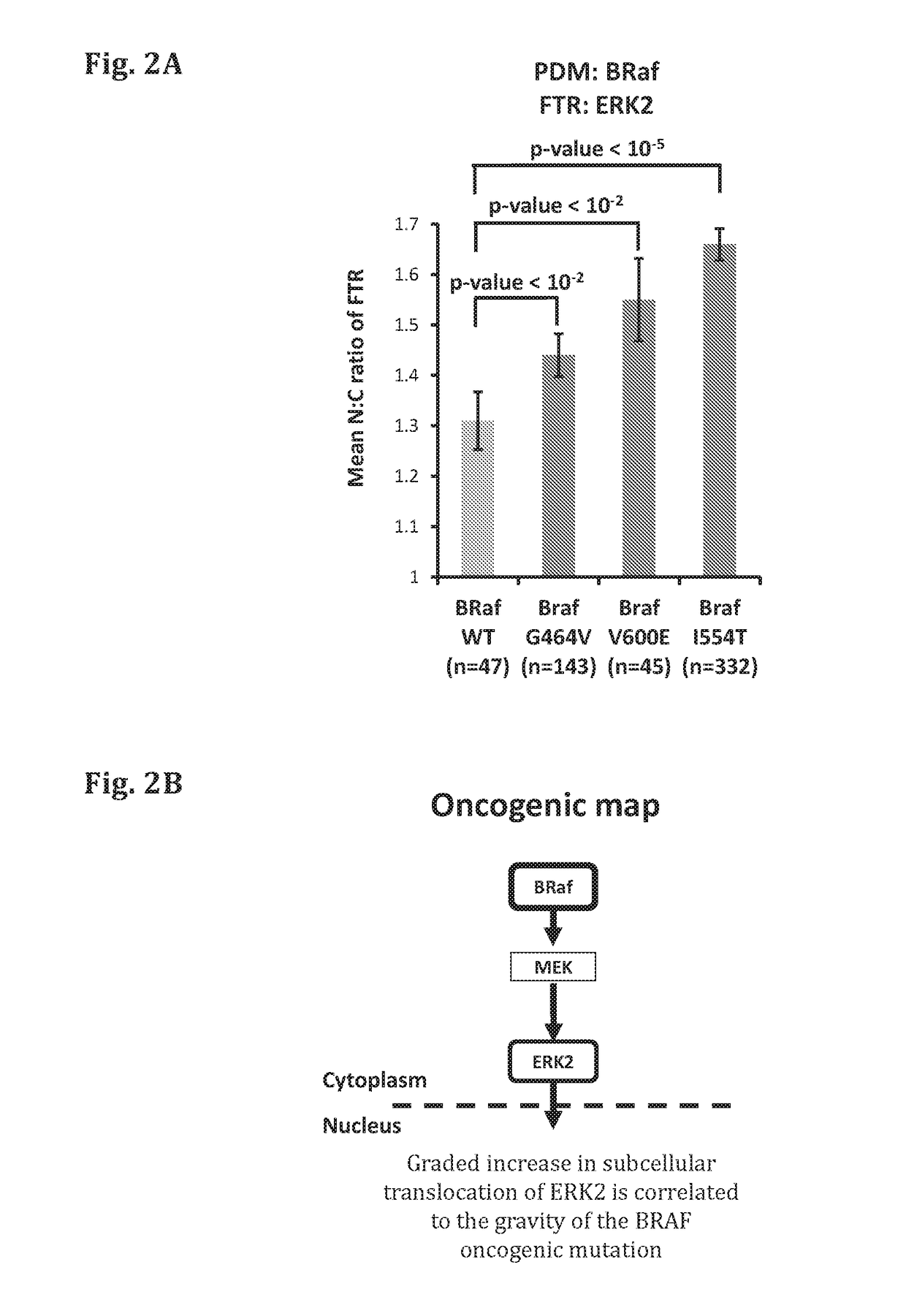Methods and systems for determining oncogenic index of patient specific mutations
a technology of oncogenic index and patient, applied in the field of methods and systems for determining the oncogenic index of patient specific mutations, can solve the problems of limited suitability of whole-genome sequencing (such as next-generation sequencing) for providing accurate prognosis or optimizing the selection of targeted therapy, and achieve the effect of optimizing treatmen
- Summary
- Abstract
- Description
- Claims
- Application Information
AI Technical Summary
Benefits of technology
Problems solved by technology
Method used
Image
Examples
example 1
ar Translocation Assay of the ERK1 / 2 Pathway can Discriminate Between the WT and Mutant BRAF and Identify BRAF Driver Mutations in a Quantitative Manner
[0417]HeLa assay cells were transfected with a WT PDM (BRAF-WT) or the indicated mutated PDMs (mutated BRAF, harboring one of the following mutations: known driver mutations G464V orvV600E, a functionally unknown mutation, I554T, which resides in the kinase domain of BRAF), along with a corresponding FTR (ERK-2). 30 hours after transfection, cells were fixed and imaged utilizing a fluorescence microscope. The amount of the FTR in the cytoplasm and in the nucleus was quantified. The ratio between the intensity of the FTR in the nucleus (N) and cytoplasm (C) was measured (N:C ratio). Altogether, the results show that the two functionally known mutations (G464V and V600E) activate the ERK1 / 2 signaling pathway (FIG. 2A). The results further show that the functionally unknown mutation (I544T) also actives the tested signaling pathway, ind...
example 2
ar Translocation Assay can Discriminate Between the WT and Mutant EGFR and Grading EGFR Mutation Severity
[0419]HeLa assay cells were transfected with a WT PDM (EGFR-WT) or the indicated mutated PDMs (mutated EGFR, harboring one of the following mutations: known driver mutation G719S, L861Q, L858R, E746Del or a mutant which includes three known driver mutations-G719A, T790M (known to confer resistance to small molecule EGFR inhibitors) and L861Q, (triple mutation)), along with a corresponding FTR. 30 hours after transfection, cells were fixed and imaged utilizing a fluorescence microscope. The amount of the FTR in the cytoplasm and in the nucleus was quantified. The ratio between the intensity of the FTR in the nucleus (N) and cytoplasm (C) was measured (N:C ratio). The results are presented in FIGS. 3A, 4A and 5B. In FIG. 3A, the FTR is AKT1 and in FIG. 4A, the FTR is JNK1. FIG. 5B is an enhanced comparison of 4 mutations along 3 different pathway, presented as the difference in N:C...
example 3
ar Translocation Assay can Allow Grading ERBB2 Mutation Severity
[0420]HeLa assay cells were transfected with a WT PDM or the indicated mutated PDMs (ERBB2 V8421, V777L, S310F, L755S, D769Y, A1170P), along with a corresponding FTR, JNK2, ERK2, STAT3 or P38. 24 hours after transfection, cells were fixed and imaged utilizing a fluorescence microscope. The amount of the FTR in the cytoplasm and in the nucleus was quantified. The ratio between the intensity of the FTR in the nucleus (N) and cytoplasm (C) was measured (N:C ratio) and is presented as the difference in N:C ratio (Delta N:C ratio) compared to the WT. The results presented in FIG. 6B are an enhanced comparison of 6 mutations along 4 different pathways.
[0421]Altogether, the results show that the activation levels vary in the different mutants. Thus, by using the methods disclosed herein, that graded increase in subcellular translocation of the FTR is correlated to the gravity of the ERBB2 oncogenic mutation.
PUM
| Property | Measurement | Unit |
|---|---|---|
| time | aaaaa | aaaaa |
| time | aaaaa | aaaaa |
| time | aaaaa | aaaaa |
Abstract
Description
Claims
Application Information
 Login to View More
Login to View More - R&D
- Intellectual Property
- Life Sciences
- Materials
- Tech Scout
- Unparalleled Data Quality
- Higher Quality Content
- 60% Fewer Hallucinations
Browse by: Latest US Patents, China's latest patents, Technical Efficacy Thesaurus, Application Domain, Technology Topic, Popular Technical Reports.
© 2025 PatSnap. All rights reserved.Legal|Privacy policy|Modern Slavery Act Transparency Statement|Sitemap|About US| Contact US: help@patsnap.com



